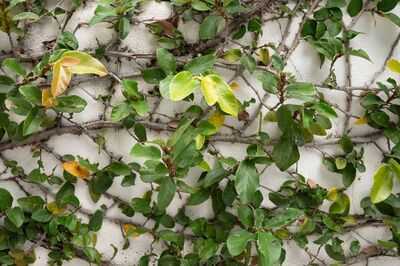
English ivy might evoke enchantment in your , yet without a bit of control, it can really lead to chaos. Though not labelled invasive in the UK, it still poses a threat by outcompeting fellow plants for essential life supports - sometimes leading to their demise.
Hal Brindley, a wildlife expert and the brain behind Our Wild Yard, urges garden lovers that you don't need harsh chemicals to tackle the tenacious creeper. He cautioned against reaching for the herbicides, expressing: "It may be tempting to dump a systemic herbicide on the green menace in your yard, but keep in mind that weed killers like roundup can cause extensive damage to other plant species with spray drift."
READ MORE:
Internet lore might applaud vinegar as an ivy obliterator, but even this homespun potion risks collateral damage and might not deliver the knockout blow you're after.
Hal advocates a different tack, declaring: "Sure, you could try a spot treatment with a more natural alternative like a spray bottle of white vinegar. But our goal is to not put plant killers of any kind in our yard."
For those committed to banishing English ivy for good sans poisons, Hal's method is delightfully low-tech - a stout pair of gloves, trusty hand shears, and a shovel are the trio to triumph, reports .
If you're battling with English ivy, expert Hal shared a tip on the best time to tackle the invasive plant.
"Remove English ivy the day after it has rained which will help make the job easier," he advises. Start by removing the weaker parts from trees "like a carpet" and continue with ivy on the ground.
Hal explained: "English ivy grows through and over everything on the ground creating a tangled mess. If there are sticks, branches, logs, lumber, or any trash mixed in, peeling up the ivy becomes impossible."
Moreover, he added that this can obstruct efforts to root out the plant. "Even worse, it may prevent you from pulling the roots. One of the first things you need to do is take the time to remove sticks, branches, and logs."
Armed with shears, tackle the ivy in small sections to manage the weight of the dense vines. Hal's strategy for vine removal is quite straightforward: "Clip through vines to create the two edges of your peel. Ideally, aim those edges toward obstacles like trees or bushes so you can peel around either side of them."
To facilitate an easier process, he suggests a unique method. "The easiest and fastest method I've found for this is to start at the top edge of the patch, face downhill, and dig my boot under the ivy stems along the line I want to cut."
With gloves on, lift and continue cutting the ivy repeating the same steps till it's all cleared.
To finally declare victory over the ivy invasion, digging out the roots is key. While it's feasible by hand, using a shovel for the larger roots comes highly recommended.
Hal advised: "Grab firmly where it enters the ground and pull upward. If it resists, wrap it once around your hand and pull harder."
He further explained: "Most of the time, some or all of the root pops out of the ground with this technique. But if you don't get the whole thing, don't despair and keep moving. Just get as many as you can."
Hal emphasised the importance of maintenance: "This step is critical so don't leave it out. You won't get every root. But if you keep an eye on the area, any new growth that pops out the following winter is a root that survived."
Hal continued by giving some follow-up advice: "When you spot new leaves, it's time to get out the shovel and make sure you get it out."